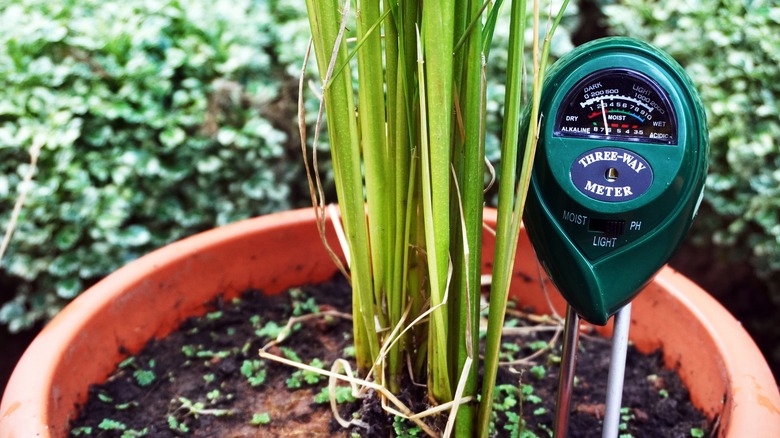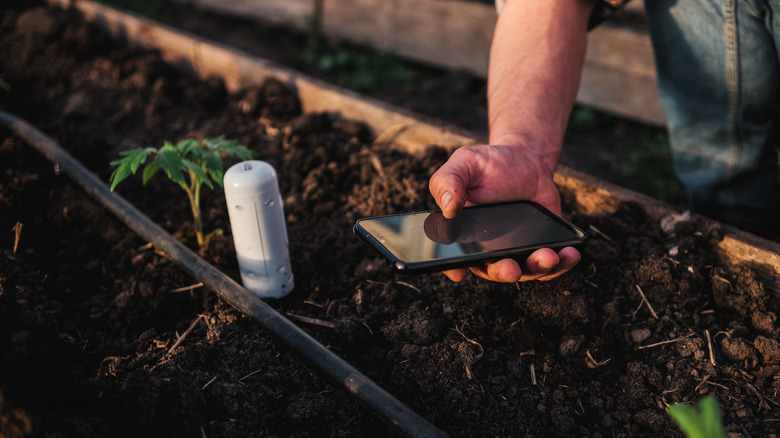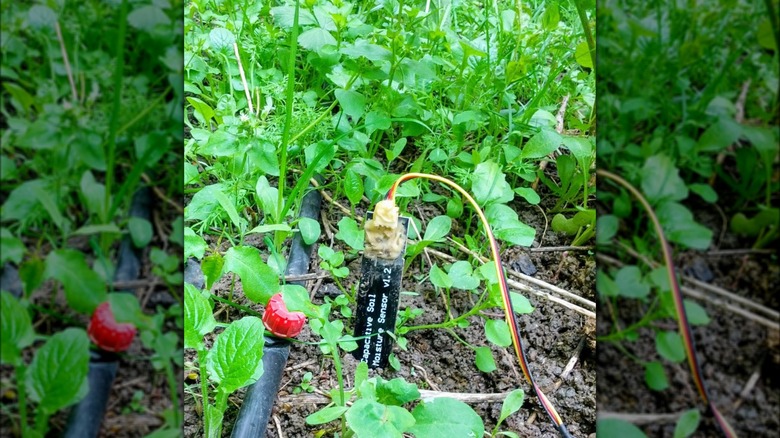The Main Reason Why Moisture Meters Aren't Always Reliable
You can't sense wetness. Your fingers use temperature and other sensory clues to assemble a sense of whether something you touch is dry or wet, and it does an amazing job. Similarly, soil moisture sensors don't directly detect wetness but use a variety of means to figure out how much water is present. It's usually done by measuring how well an electrical signal is conducted by the soil from one point on a probe to another. Water increases this conductivity, so more conductive soil tends to be moister. And that works great ... until it doesn't. The big problem with inexpensive moisture meters is that characteristics of the soil can make their sensors work less well over time.
Underwatering is obviously a risk, but many plants don't like wet soil and you should never plant seeds in wet soil. Assuming you decide to keep track of soil moisture using a meter, it's probably not strictly necessary to have the amount of accuracy and specificity you'd get from, say, a commercial moisture meter. Of course, accuracy is hard to establish for meters with a numbered scale, typically 1 to 10, but no actual volumetric values (10%, 14%, etc.). Consistency is what matters; if there's X amount of water in the soil, the meter should always read the same. But if your soil is over-fertilized, has a buildup of salts, is particularly dense, contains a lot of clay, or is frozen, things start to fall apart.
Why moisture meters stop working well
When we say things like "water increases conductivity," it's not strictly true. It's ionized substances dissolved in the water that provide the conductivity; pure, deionized water barely conducts electricity at all. What this means is that lots of dissolved salts make your soil moisture meter claim there's more water present. Unfortunately, a lot of the things we put in our soil — particularly various fertilizers — end up as soluble salts. Over time, the salts build up, and the soil measures wetter than it actually is. Hard water, which contains dissolved metallic ions of calcium and magnesium, causes the same problem. The problem can be exaggerated in compacted soils or soil with higher clay content; both tend to read as wetter on moisture meters.
The ability to accurately meter a particular bit of soil might not be your biggest problem, though. Some of the same substances that foul up your readings can also permanently foul up your meter. This is because your metal probe (which is actually often two probes combined into one structure) can be deteriorated by oxidation by contact with water, by corrosion from the mineral salts in the water, and by electrolysis resulting from running an electric current through certain types of soil, particularly heavy clay.
Getting the best readings as long as possible
In the short term, you can't do much about a buildup of salts in your soil other than mentally account for it. But there are some steps you can take to get the most accurate readings from your soil moisture meter. The most important is to keep your probe clean and dry. This means storing it when not in use, rather than simply leaving it in the soil. Rinse the probe and soak it in clean water for a half-hour to root out any dissolved salts that might be working their way into the metal. Let it air dry, then store it somewhere dry and cool. Heat can destroy plastics and electronics faster than you'd think possible.
Other steps might help as well. Take a variety of readings rather than just one to minimize the chance of being thrown off by an area that's unusually dense or unusually saturated with accumulated salts, and take the readings at different depths. And use more than one method if you can. Some hobby electronics like Arduino kits have capacitive sensors that resist corrosion, so if you're technically inclined you can build a soil moisture sensor of your own for a second opinion. You can even use wooden chopsticks to prevent overwatering your plants, but perhaps the best backup of all is your finger. Even if your brain only pretends to have a wetness sensor, it does a really good job most of the time.


